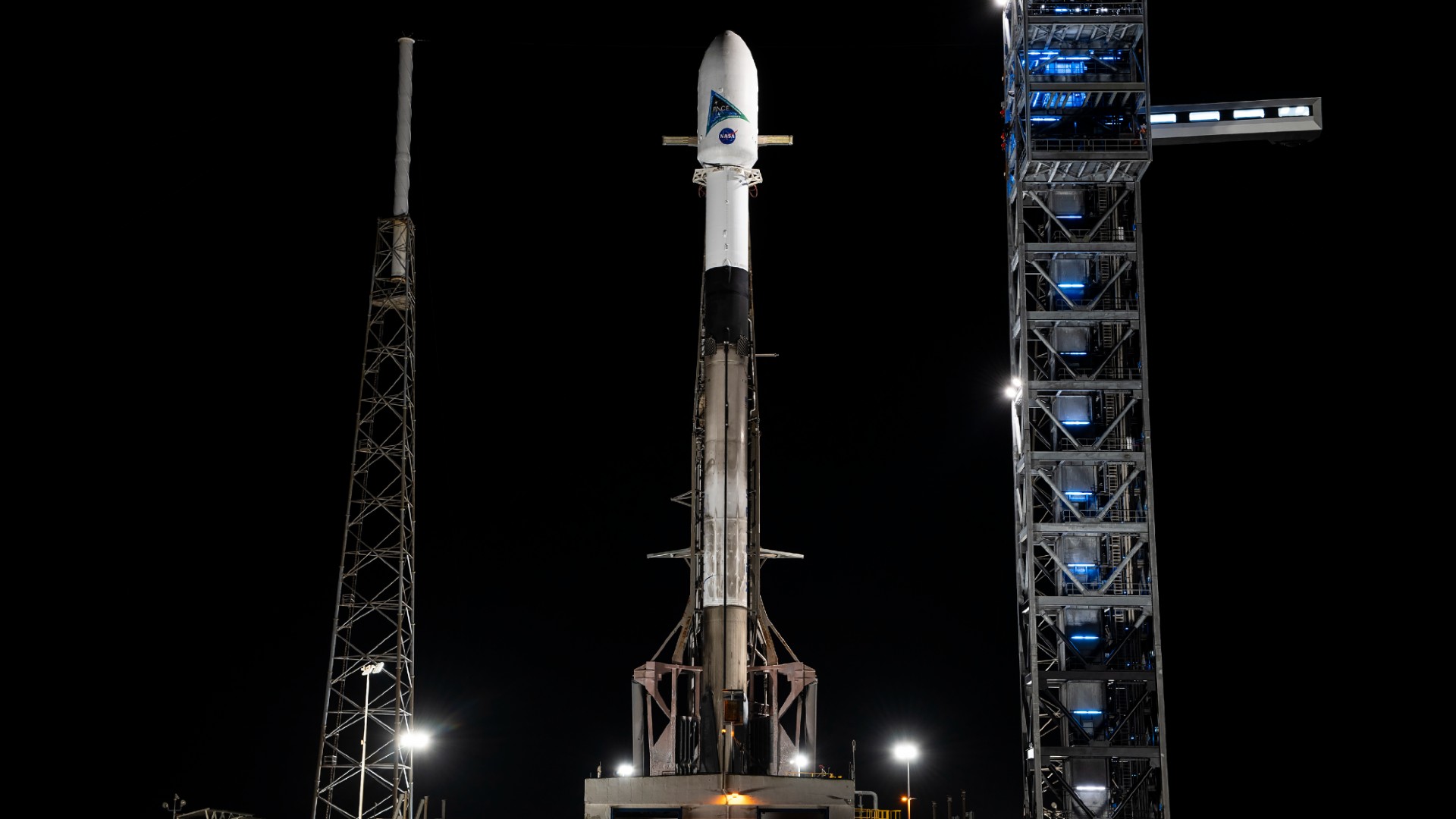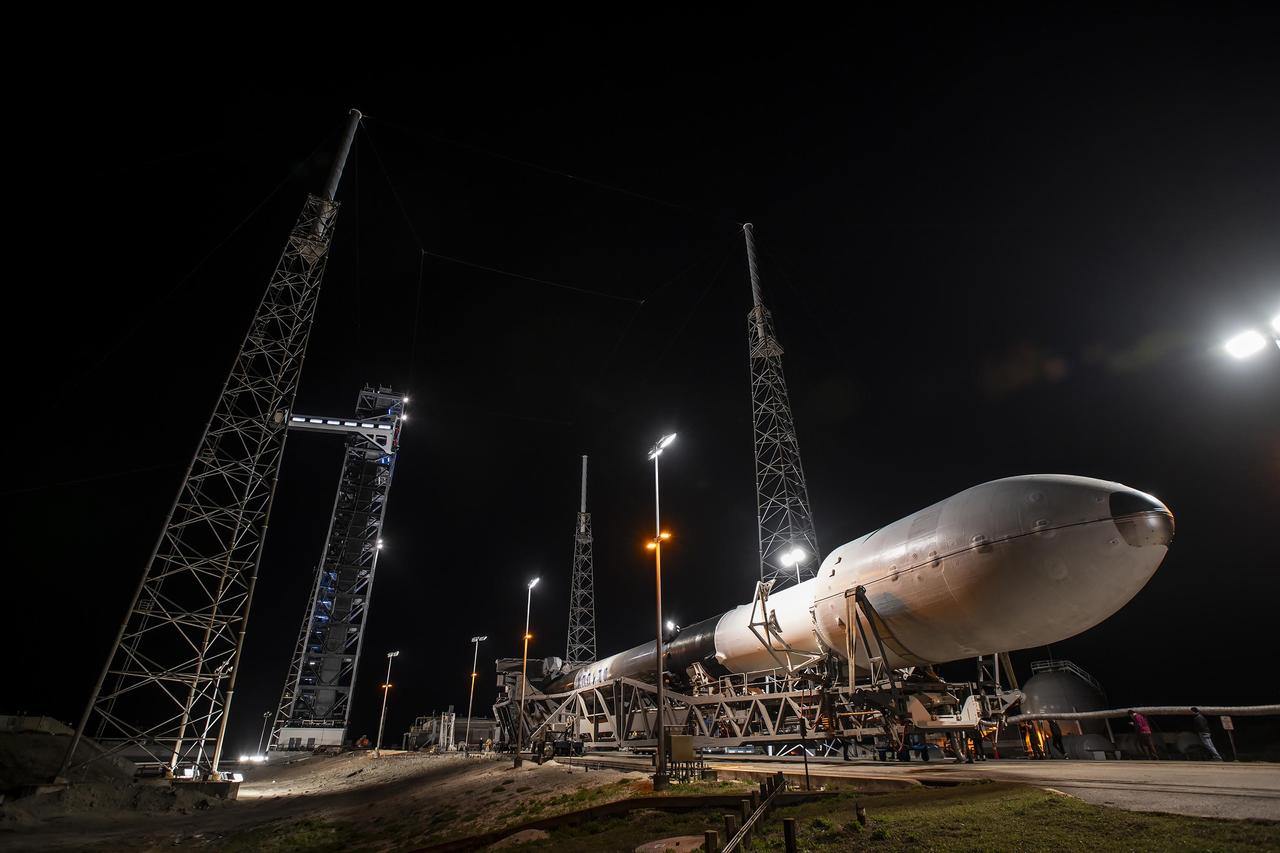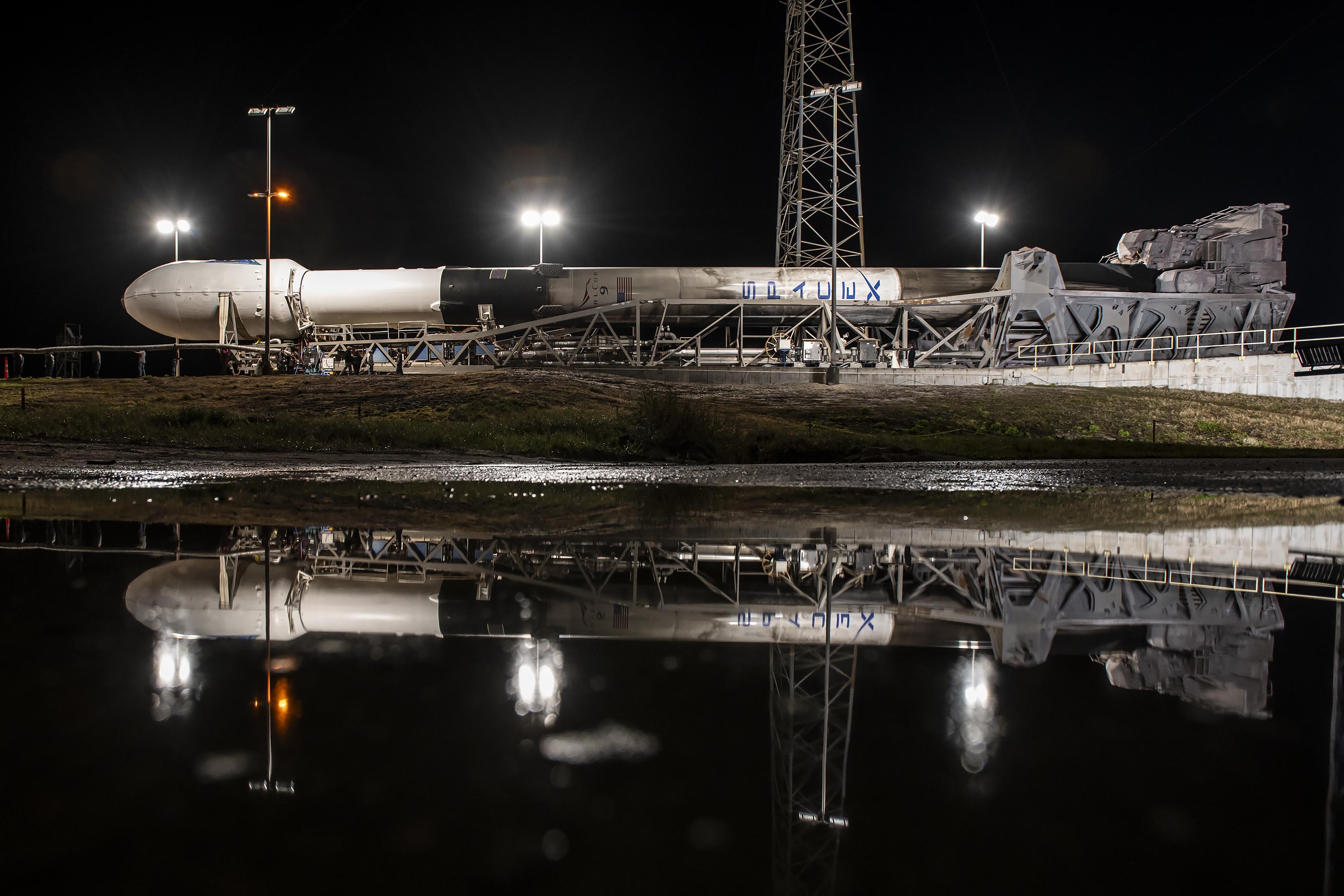SpaceX rolls out Falcon 9 rocket to launch NASA's ocean-studying PACE satellite on Feb. 8 (photos)
'Understanding how ocean life interacts with the atmosphere and the global climate is one of the secrets of the universe right here at home.'

NASA's Plankton, Aerosol, Cloud, Ocean Ecosystem (PACE) satellite is set to depart Earth from Cape Canaveral Space Force Station on Thursday (Feb. 8) at 1:33 a.m. EST (0633 GMT.) It will launch atop a SpaceX Falcon 9 rocket.
Launch had been planned for Tuesday (Feb. 6) and Wednesday (Feb. 7) at the same time, but bad weather forced a delay.
Ahead of the launch, NASA and SpaceX experts gathered to discuss the impact the PACE mission will have on climate science as it monitors the interaction between Earth's oceans and atmosphere.
Related: NASA's PACE satellite will study Earth's tiniest mysteries from space: Watch it launch live Feb. 6
"Understanding how ocean life interacts with the atmosphere and the global climate is one of the secrets of the universe right here at home. Aerosols that cycle through the ocean and atmosphere are a factor in how clouds form and how weather systems behave," NASA Associate Administrator Jim Free said at a press conference on Monday (Feb. 5). "But exactly how that process works is a scientific mystery. Unraveling it is one big goal of the PACE mission in line of course with NASA's charge to explore the unknown in air and space."
Free added that PACE will join the two dozen NASA missions in orbit currently that collect vital data on Earth's land, ocean, atmosphere and ice. The mission's data will be used by scientists and policymakers to safeguard against the threat of global climate change.

PACE will study tiny things to make a big scientific impact
Also speaking at the press event, Director of NASA's Earth Science Division Karen St. Germain explained that PACE will use its vantage point to investigate tiny micro-organisms that play a huge role on Earth, microalgae called phytoplankton.
Get the Space.com Newsletter
Breaking space news, the latest updates on rocket launches, skywatching events and more!
"Our Earth is a water planet. The surface of the Earth is covered 70% by oceans, and yet, in many ways, we know more about the surface of the moon than we do about our own oceans," St. Germain said. "Phytoplankton are at the base of the marine food chain. They serve our fisheries and the health of the oceans. They are also responsible for absorbing a tremendous amount of carbon dioxide through photosynthesis and converting that into oxygen in the atmosphere.
"But they can also be toxic, and we need to know that, too."
St. Germain added that PACE won't just be looking at tiny organisms in the oceans. It will also study tiny particles in the atmosphere called aerosols.
"Aerosols play an enormous role in our weather, our air quality, and even our climate. They come from sources like dust flowing off the Sahara, wildfires, and even human activities, and they seed clouds that can grow into hurricanes coming across the Atlantic," St. Germain said. "But they also reflect a lot of the sun's energy. So, they play an important role in the long-term sustained stability of Earth's climate. Because we're measuring both of these things together, PACE will allow us to understand the strong interactions between the atmosphere and the ocean."

The PACE launch will also be offering something a little bit different for typical NASA Cape Canaveral liftoffs.
"PACE is the eighth NASA LSP mission to launch on a SpaceX rocket, and the first government mission to fly a polar trajectory from the Cape since November of 1960," NASA Launch Services Program (LSP) Director Tim Dunn said. "Now, SpaceX is well seasoned in flying this particular trajectory. They've done it 11 times commercially since 2020."
During the last Cape "polar launch," the blast-off of SOLRAD 2 and Transit 3A atop a Thor-Ablestar rocket on Nov. 30, 1960, a booster flew off course and rained debris over Cuba. After this, NASA's polar launches were moved to the Vandenberg Space Force, previously Vandenberg Air Force Base.
Plus, the launch of PACE has been a long time coming. The Trump administration proposed canceling PACE in all four of its NASA budget proposals, from fiscal years 2018 through 2021, but Congress kept the mission funded each year.
The Falcon 9 rocket with PACE attached was rolled out to the launch pad and erected at around 4 a.m. EST (0900 GMT) on Monday morning. Final preparations should begin at 10 p.m. EST (0300 GMT) tonight, with propellants set to be loaded at around 12:50 a.m. EST (0450 GMT).
The PACE launch was supposed to happen early Tuesday morning (Feb. 6), but the weather didn't cooperate. There's a 60% chance of good weather for Wednesday's opportunity, according to U.S. Space Force Weather Officer Brian Cizek.
The weather issues aren't dampening spirits at NASA for this important launch, however.
PACE's "launch is not just a mission to space. It's a testament to our collective pursuit of knowledge, innovation, and the betterment of humanity for all Earthlings," Free concluded. "Go Falcon and go PACE."
You can watch the PACE launch live here at Space.com, courtesy of NASA, or directly via the space agency's website.
Editor's note: This story was updated on Feb. 6 with news of the launch delay to Feb. 8.
Join our Space Forums to keep talking space on the latest missions, night sky and more! And if you have a news tip, correction or comment, let us know at: community@space.com.

Robert Lea is a science journalist in the U.K. whose articles have been published in Physics World, New Scientist, Astronomy Magazine, All About Space, Newsweek and ZME Science. He also writes about science communication for Elsevier and the European Journal of Physics. Rob holds a bachelor of science degree in physics and astronomy from the U.K.’s Open University. Follow him on Twitter @sciencef1rst.









